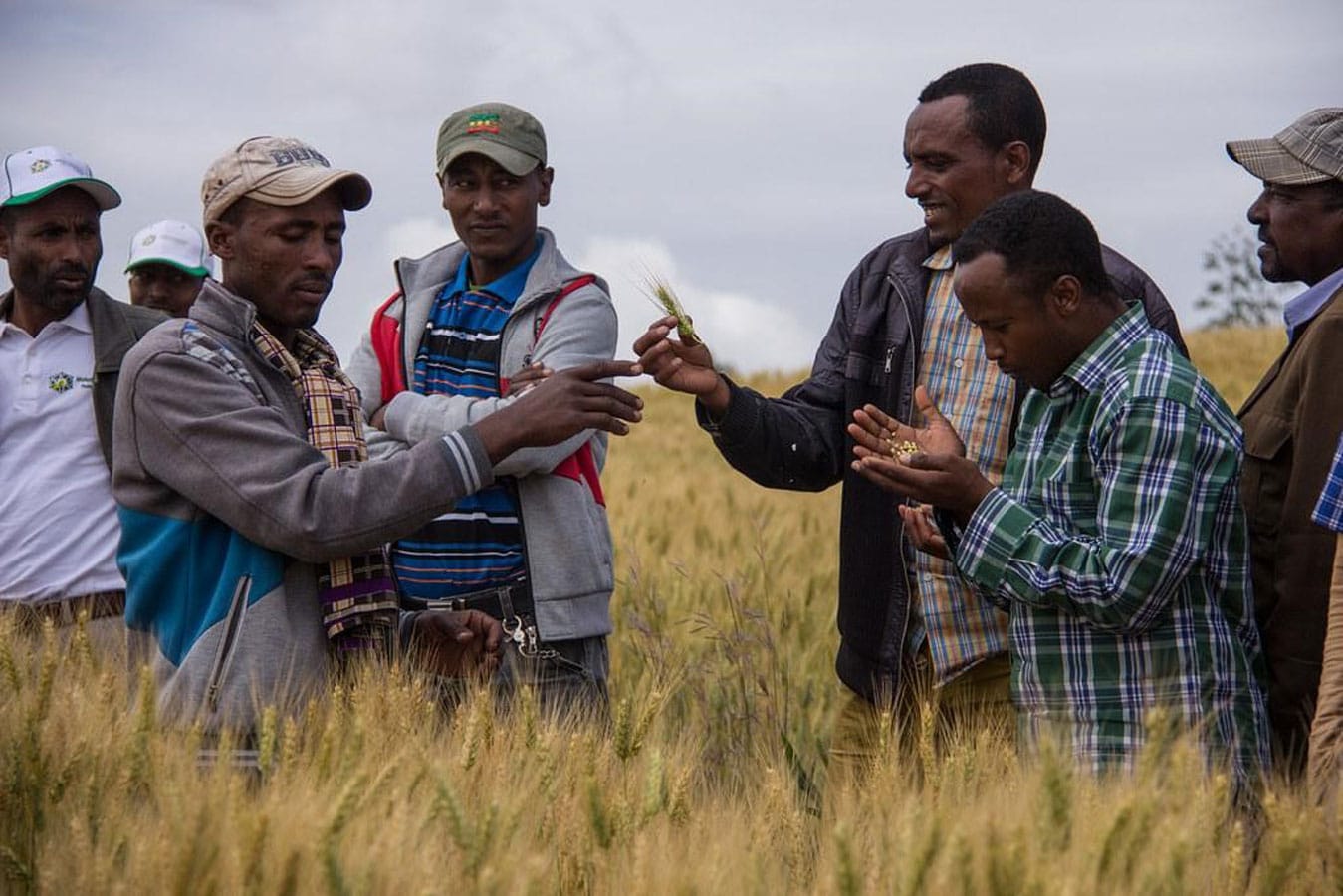Of all the natural threats to the world’s food supply, few are more dreaded than wheat rust, a category of fungal infections that can ruin a harvest. In the US, farmers have access to government monitoring and agricultural extension programs as well as resistant varieties and fungicides from private dealers. But smallholder farmers in developing countries are largely left to their own devices, coping as best they can.
An ancient enemy
Wheat leaf rust and stripe rust are fungal diseases that create a yellow-brown rust-like discoloration on the leaves and stems of infected grain plants, hence the name. These pathogens attack barley and rye, as well, but they’re most famous for infecting wheat crops, spreading easily in the air through spores. Wheat rust can even survive winter, attacking winter wheat in temperate climates.
Bad wheat rust outbreaks can typically lead to yield losses of 30% or greater, dealing to farmers a devastating blow. That’s why the United States Department of Agriculture regularly issues a Cereal Rust Bulletin to alert farmers to looming threats and outbreaks.
“Yield loss due to wheat rusts can reach up to 70%.”
Lacking varieties
Writing in the journal Soil & Plant Science, South African and Ethiopian agricultural scientists said they were astonished to find from their investigations that some 97% of Ethiopia’s smallholder wheat farmers likely contended with wheat rust at some point in the past and that the disease remains a major threat to crops and livelihoods.
Yield losses can far exceed those typical in developed countries. “Respondent farmers reported about 67% and 65% yield loss in the East Hararghe and West Haraghe zones, respectively,” the scientists wrote. “This concurs with other studies that have found that yield loss due to wheat rusts can reach up to 70%.”
When chemical fungicides become too expensive, Ethiopian farmers must rely on cultural practices, such as crop rotation and fallowing. The best modern defense against wheat rust, namely rust-resistant varieties, is absent from the battlefield. “There are no rust-resistant wheat varieties available in Ethiopia; hence the farmers rely on chemical fungicides and cultural control to manage the disease,” the agricultural scientists said in their overview and update of the situation (https://www.tandfonline.com/doi/full/10.1080/09064710.2021.2022186).
A known issue
Three years before the February study came out, a separate investigation into the prevalence of wheat rust in Ethiopia found largely the same situation—smallholder farmers struggling in the absence of a system for regularly distributing rust-resistant wheat varieties. About a decade ago, during a bad rust outbreak, some farmers grew rust-resistant varieties (https://journals.plos.org/plosone/article?id=10.1371/journal.pone.0219327). As Jaleta et al. reported in the journal PLOS ONE, the resistant varieties worked. “There was a 29%-41% yield advantage in increasing wheat area to new, resistant varieties even under normal seasons with minimum rust occurrence in the field,” they wrote.
More research is needed to better understand why resistant varieties haven’t caught on and develop better alternatives for farmers. Although wheat rust is far from a new problem, conflict in Ukraine has recently stressed global wheat supplies and only increased the urgency of this work.
— Grow Further
Photo credit: Farmers in Ethiopia examine newer wheat varieties during a field demonstration. ICARDA, Creative Commons.




